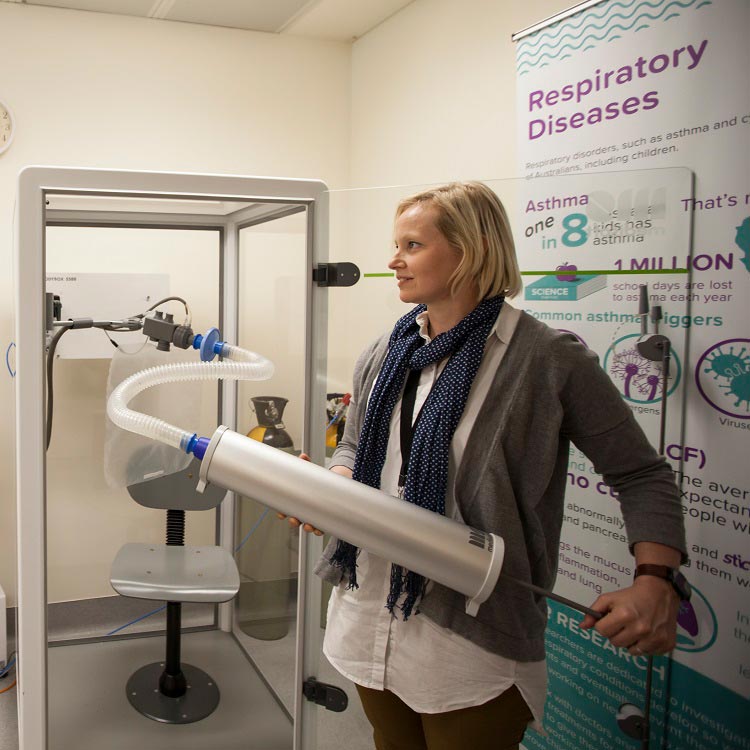Search

News & Events
Very preterm babies at risk of declining lung function throughout childhoodA The Kids Research Institute Australia study published in The Lancet Child & Adolescent Health has found that survivors of very preterm birth face declining lung function
Research
SHIP CT: A Phase 3 randomised, double-blind, controlled trial of inhaled 7% hypertonic saline versus 0.9% isotonic saline for 48 weeks in patients with Cystic Fibrosis at 3-6 years of age in parallel with the North American SHIP clinical trial.SHIP-CT, led by Professor Stephen Stick, Director of the Wal-yan Respiratory Research Centre at The Kids, is a unique study in preschool-aged children (from 3-6 years of age) with CF using images of the lung from chest CT scans as the main outcome measure.
Research
Insights into the associations between the gut microbiome, its metabolites and heart failureHeart failure (HF) is the end stage of most cardiovascular diseases and remains a significant health problem globally. We aimed to assess whether patients with left ventricular ejection fraction ≤45% had alterations in both the gut microbiome profile and production of associated metabolites when compared to a healthy cohort.
Research
Stability Considerations for Bacteriophages in Liquid Formulations Designed for NebulizationPulmonary bacterial infections present a significant health risk to those with chronic respiratory diseases including cystic fibrosis and chronic-obstructive pulmonary disease. With the emergence of antimicrobial resistance, novel therapeutics are desperately needed to combat the emergence of resistant superbugs.
Research
Real world effectiveness of early ensitrelvir treatment in patients with SARS-CoV-2, a retrospective case seriesEnsitrelvir, a 3C-like protease inhibitor, received emergency approval in Japan in November 2022 for treating non-hospitalized patients with mild-to-moderate COVID-19. However, confirmation of its real-world clinical effectiveness is limited.
Research
tesG expression as a potential clinical biomarker for chronic Pseudomonas aeruginosa pulmonary biofilm infectionsPseudomonas aeruginosa infections in the lungs affect millions of children and adults worldwide. To our knowledge, no clinically validated prognostic biomarkers for chronic pulmonary P. aeruginosa infections exist. Therefore, this study aims to identify potential prognostic markers for chronic P. aeruginosa biofilm lung infections.
Research
The airway epithelium is a direct source of matrix degrading enzymes in bronchiolitis obliterans syndromeLong-term survival after lung transplantation is hindered by the development of bronchiolitis obliterans syndrome (BOS).
Research
Cyanide in bronchoalveolar lavage is not diagnostic for Pseudomonas aeruginosa in children with cystic fibrosisEarly detection of the cyanobacterium Pseudomonas aeruginosa in the lungs of young children with cystic fibrosis (CF) is considered the key to delaying...
Research
Multi-modality monitoring of cystic fibrosis lung disease: the role of chest computed tomographyStratification of monitoring protocols based on the risk profile of the patient can help us in the future to better care for people with Cystic Fibrosis.
Research
Suppression of adrenomedullin contributes to vascular leakage and altered epithelial repair during asthmaThe anti-inflammatory peptide, adrenomedullin (AM), and its cognate receptor are expressed in lung tissue, but its pathophysiological significance in airway...
